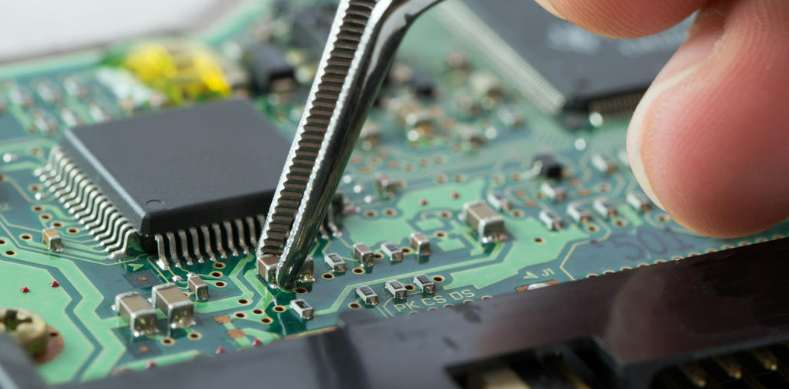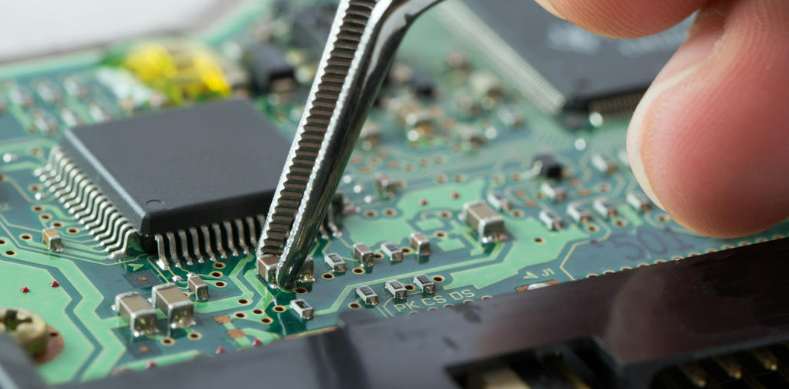
What is a hole?
Through hole (via) is one of the important components of multilayer PCB, the cost of drilling usually accounts for 30% to 40% of the PCB board. Simply put, every hole in the PCB can be called a pass hole. From the point of view of function, the hole can be divided into two categories: one is used as an electrical connection between the layers; The second is used for fixing or positioning devices. If from the process, through the hole is generally divided into three categories, namely blind hole, buried hole and through hole.
Blind holes are located on the top and bottom surfaces of the PCB and are of a certain depth. They are used to connect the surface circuit to the inner circuit below. The depth of the holes usually does not exceed a certain ratio (aperture). Buried holes are connection holes located in the inner layer of the PCB that do not extend to the surface of the PCB. Both types of holes are located in the inner layer of the circuit board, which is completed by a through-hole molding process prior to lamination. Several inner layers may be overlapped during the through-hole formation process.
The third type, called through-holes, runs through the entire circuit board and can be used for internal interconnection or as installation positioning holes for components. Because the through hole in the process is easier to achieve, the cost is lower, so most of the printed circuit board is used in it, rather than the other two through holes. The following mentioned through holes, without special instructions, are considered as through holes.
The composition of the pores
From the design point of view, a through hole is mainly composed of two parts, one is the middle of the drilling hole, the other is the welding pad area around the drilling hole. The size of these two parts determines the size of the hole. Obviously, in the design of high speed, high density PCB, the designer always wants the hole as small as possible, the template can leave more wiring space, in addition, the hole is smaller, its own parasitic capacitance is smaller, more suitable for high speed circuit.

However, the decrease of hole size also brings the increase of cost, and the size of the hole can not be reduced indefinitely, it is limited by drilling and electroplating technology: the smaller the hole, the longer the drilling time, and the more easy to deviate from the center position; When the hole depth is more than 6 times the diameter of the hole, it is impossible to guarantee the uniform copper plating on the hole wall. For example, the thickness (through hole depth) of a normal 6-layer PCB board is about 50Mil, so the minimum drilling diameter provided by PCB manufacturers can only reach 8Mil.
Parasitic properties of pores
1. Parasitic capacitance
There is a parasitic capacitance to the ground through the hole itself. If the diameter of the isolation hole through the hole on the paving layer is D2, the diameter of the welding plate through the hole is D1, the thickness of the PCB board is T, and the dielectric constant of the substrate is ε, then the parasitic capacitance through the hole is approximately as follows:
C = 1.41 epsilon TD1 / (- D1, D2)
The main effect of the parasitic capacitance through the hole on the circuit is to prolong the rise time of the signal and reduce the speed of the circuit.
For example, for a PCB board with a thickness of 50Mil, if a through-hole with an inner diameter of 10Mil, a diameter of 20Mil of the pad is used, and the distance between the pad and the copper floor area is 32Mil, then we can approximate the parasitic capacitance of the through-hole through the above formula:
C = 1.41 x4.4 x0.050 x0.020 / (0.032 0.020)
= 0.517 pF
The variation of rising time caused by this part of capacitance is:
T10-90 = 2.2 C (Z0) / 2 = 2.2 x0.517 x (55/2)
Ps = 31.28
It can be seen from these values that although the effect of the parasitic capacitance of a single hole is not obvious, the designer should be careful if multiple holes are used to switch between layers in the route.
2. Parasitic inductance
In the design of high-speed digital circuit, the harm caused by the parasitic inductance is often greater than the influence of the parasitic capacitance. Its parasitic series inductance will weaken the contribution of the bypass capacitance and reduce the filtering effectiveness of the whole power system. We can use the following formula to simply calculate the parasitic inductance of a through-hole approximation:
L = 5.08 h [ln (4 h/d) + 1)
Where L refers to the inductance of the hole, h is the length of the hole, and d is the diameter of the central hole.







